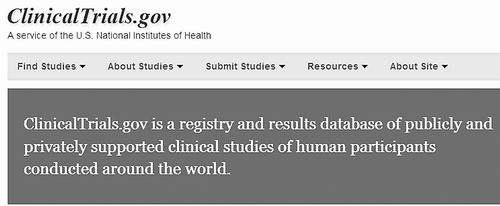区块链与医疗业:可通过区块链技术对临床试验结果进行保护


对于一些商业敏感的,新疗法的试验来说这可能会起到一些作用。只要在试验开始之时把公钥上传到数据库里,整个步骤就可以供人检验,而无需担心在试验过程中其步骤有修改。
《经济学人》(英语:The Economist)是一份英国的英文新闻周报,它在1843年9月由詹姆斯·威尔逊创办。是一本涉及全球政治、经济、文化、科技等多方面事务的综合性新闻评论刊物,着重于对这些议题提供深入的分析和评论。它面向教育程度较高的人群,读者中包括诸多具有影响力的高管和决策者。本文选自经济学人2018年8月2日的文章。

CLINICAL trials are a murky old world. The pharmaceutical industry is keen to get new drugs to market and researchers are just as keen to report positive results. This can produce some rather unpleasant side-effects. Selective reporting of data from trials is rife. In one infamous example, a 2001 study reported that paroxetine, an antidepressant, was safe and effective for treating the illness in teenagers. It later emerged, however, that this was based on new measures of the drug’s effectiveness, introduced only after the drug had failed to show any significant improvement in the outcomes that had been specified when the trial was first drawn up. Later studies showed that the drug increased the risk of suicidal behaviour in children.
临床试验是个晦涩难懂的守旧领域。医药企业十分期望向市场推出新药,正如研究人员十分期望发布积极的结果一般。然而这些观念会引起一些不太乐观的负面效应。在业内,片面和偏颇的选择数据进行报告是十分普遍的。在2001年发生了一件臭名昭著的事件。一项研究发布了一种名为帕罗西汀的抗抑郁药物的研究结果,显示药物对于治疗青少年的抑郁症十分安全有效。然而之后人们发现,这个结果是基于对于药效的新测量标准,而新标准只在之前的实验结果没有显示药效有任何明显改善之后才发布。随后又有研究显示,帕罗西汀会增加青少年自杀的风险。

How to guard against such things got Greg Irving, a family doctor and a researcher at the University of Cambridge, thinking. He came up with a way to improve the reporting of clinical trials with the blockchain technology underlying bitcoin, a digital currency. The blockchain is a database that acts as a public ledger of all transactions with the currency, and is thought to be almost completely tamper-proof because it is validated and stored independently on thousands of different computers worldwide. This provides a way, Dr Irving reckons, to check that results have not been fudged.
一位家庭医生和剑桥大学的研究人员Greg Irving,对于如何防止类似事件的发生进行了思考。他得出的结论是,可以通过比特币背后的区块链技术对于临床试验的结果进行保护。区块链技术是一种记录某种货币所有交易记录的公共数据库,并且因为其交易数据是由世界各地的几千台独立节点来验证并储存,从而被认为是几乎完全防伪的。Irving博士据此认为,这可以提供一种检查试验结果是否被篡改的手段。
Since 2007 America’s drugs regulator has required that all clinical trials are registered in ClinicalTrials.gov, a publicly accessible database. So, Dr Irving used a recent example to demonstrate how his idea might work. He saved a copy of the study protocol, including the planned analysis and clinical outcomes it was supposed to test, to a text file. He then fed that file into an algorithm called an SHA256, which boils the data down into a unique string of characters known in cryptography as a “hash”. Even a small change to the original file, such as the addition of a full stop, would result in a completely different hash. (Conversely, it is impossible to use the code to reconstruct the contents of the original file.) Such strings are also used in bitcoin transactions.
从2007年开始,美国的药品监管者规定所有的临床试验结果都必须登记在公开数据库ClinicalTrials.gov之上。所以Irving博士使用了一例最近的事例来解释他的观点。首先,他复制了一份试验步骤文件,其中包括他意图测试的分析计划和试验结果,并且将其保存为文本文档。随后,他将这份文件通过名为SHA256的算法加密,将文件中的数据转换成为一串特定的字符串,或者用密码学中术语为“哈希值”。在SHA256算法之内,就算对源文件有一点点改动,比如仅仅加了一个句号,都会产生一个完全不同的哈希值。(但相对的,用哈希值是无法反推出源文件内容的。)比特币的交易中也采用这种算法。

To add a record of the codified protocol to bitcoin’s public ledger, its hash must be used in a bitcoin transaction. To do that Dr Irving used the hash generated from the trial protocol as a “private key”—essentially a password that allows someone to spend bitcoins in his online wallet. Bitcoin users usually randomly generate a hash for the same purpose. He then transferred a small sum of money from his bitcoin wallet to a second bitcoin wallet. The transaction created a “public key”—a second string of characters that is time-stamped and entered in the blockchain’s ledger.
如果想要在比特币的公共数据库内加入这个被加密的试验过程数据,就必须在一次比特币交易中使用那个哈希值。Irving博士随后把产生的哈希值作为“私钥”,一个能允许持有人在其钱包内花费比特币的密码。但比特币使用者们一般都采用随机产生的哈希值作为私钥。之后,Irving博士从他的比特币钱包内向另外一个比特币钱包发送了一小笔比特币,而这次交易产生了“公钥”,一串有着时间标记,并最终进入比特币链上的哈希值。
Anyone with a copy of the trial protocol should be able to reproduce the above steps to check if they resulted in the same public key. This would prove that the copy of the protocol matched the original. To show that this was the case, Dr Irving gave his protocol to John Holden, also a general practitioner, who used it successfully, the pair report in F1000Research. Though the process might seem to be convoluted, Dr Irving and Dr Holden say it took less than five minutes.
所有拥有这个试验步骤文件的人都可以通过重复上述动作来检验他们是否得到同一个公钥数值,而这能判定两个文件是否相符(如果有改动的话就无法得到相同的公钥数值——译者注)。为了实地检验他的想法,Irving博士把试验步骤文件给了另外一位医生,John Holden,而后者成功重复了上述内容并得到了正面的结果。虽然这个过程说起来难,两位博士在五分钟之内就搞定了所有手续。

Dr Irving believes the method could prevent “hidden outcome switching”, the egregious and statistically flawed practice of secretly changing the focus of a clinical trial to fit the results. A study last year of 137 trials found 60 reported on outcomes they were not looking for, according to their original protocol. The COMPare project, which monitors clinical trials, found only nine out of 67 studies it has so far looked at had reported their results properly.
Irving博士相信这种方法可以防止发生“选择隐藏结果”,即改变偷偷改变临床试验步骤来迎合结果这一十分恶劣,并且有统计缺陷的行径。在去年,一项研究显示,在其跟踪的137项试验中,有60项试验报告了与其最初试验设想不符的结果。监测临床试验的项目COMPare project发现,在其目前为止监测的67项研究中,只有9项研究正确报告了试验结果。
With about 20,000 studies registered each year on ClinicalTrails.gov alone, such problems are likely to be the tip of a very large iceberg, Dr Irving contends. Public keys for protocols should be uploaded to trial registries, he argues, and included in research papers. Researchers and medical journals could speedily check whether the right results were being reported. Ultimately, the process could be automated.
Irving博士认为,鉴于每年加入ClinicalTrails.gov的研究结果就超过两万项,类似问题很可能只是冰山一角。他还认为,试验步骤的公钥应该被添加到试验数据库和最终的研究论文中,让研究人员和医学刊物可以轻松的检查某篇论文是否报告了正确结果。而这个过程甚至最终可以自动化完成。
Another benefit, paradoxically, is that the protocol for studies could be hidden until completed. This might be useful for commercially sensitive trials of new therapies. As long as the public key was uploaded to a registry when the trial began, the protocol could be verified later without the worry that it had been changed during the study. Dr Irving would now like to test his ideas on a small number of trials. And, of course, to report the results properly.
而有些矛盾的是,这个点子还会带来一项好处,就是这些试验步骤在完成之前都可以被保密。对于一些商业敏感的,新疗法的试验来说这可能会起到一些作用。只要在试验开始之时把公钥上传到数据库里,整个步骤就可以供人检验,而无需担心在试验过程中其步骤有修改。Irving博士打算在小范围内测试他的点子,并且毫无疑问的,诚实报告他的结果。
币橙海外 聚焦于筛选与翻译海外区块链行业的新闻报道、评论、评测报告等有价值信息,帮助大家以国际化的视野了解区块链项目,成为币圈“老韭菜”。
币橙网专注于区块链项目投研分析、测评领域。通过分布式、社区协作的方式组成评测分析团队,更加公正,公平,客观的角度剖析区块链项目本身。每一期内容的产出都离不开币橙网社区的同学们,万分感谢。另外:币橙网社区不接受项目方投资,不接受收费投研分析。
说明:本文为币橙网社区斋主独立翻译而成, 只作为传递信息之用, 不作为投资依据(翻译时有删改)
文章声明:本文为火星财经专栏作者作品,版权归作者所有,不代表火星财经观点。




